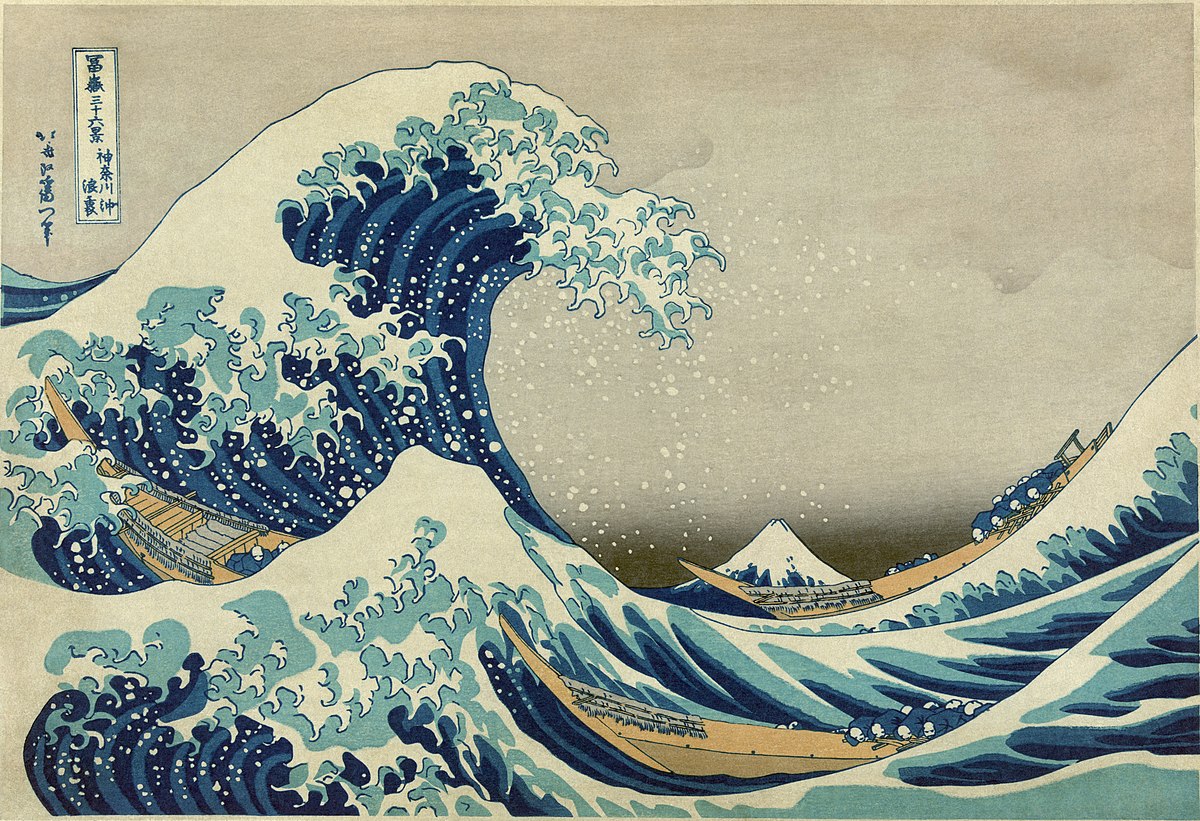
Source: Wikipedia
There are drawings that, due to their graphic line or their colors, are classified into different typologies. There are drawings that have gone down in history because behind that artistic work, there is a whole changing generation, whether socio-political or demographic, and an advance of many artists.
That is why in this post we come to talk to you about a style that has become so fashionable in the world of art and design, a style that takes us to Asian places and that is overloaded with such characteristic forms that just seeing them already Would you know how to define them? Definitely, We are going to show you the wonderful world of Japanese art and how it has influenced his works, especially in old Japanese drawings.
We hope that you will learn a lot during this long trip to Japan and be inspired by their concept of Japanese art.
japanese art
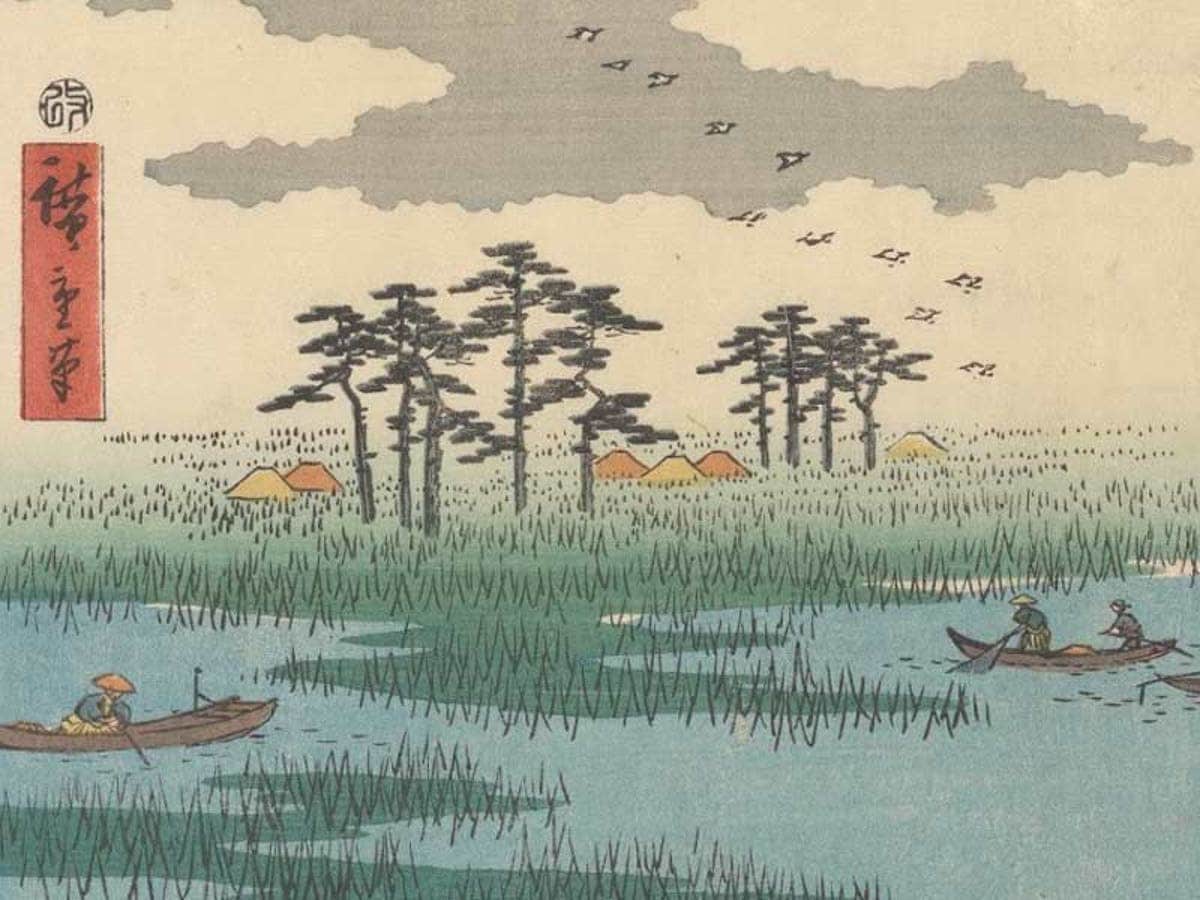
Source: Pajamasurf
Japanese arts, also known as nihonga e, It is an artistic and drawing technique that was born in Japan. The word itself encompasses several meanings, including painting or image. Japanese art was born and was influenced by American currents from the United States since then, Japan was a totally chained and imprisoned country as far as anti-seismic design is concerned.
Let's say that it was not until 1853 that the works began to go viral and to position themselves in the market. The fact that it had its doors open allowed Japan to become rich thanks to its works and the socio-economic and socio-cultural level to grow and increase in equal parts. In short, these are years of struggle and equality on the part of Japan, as well as cultural recognition.
General characteristics
Colours
The use of striking and strong colors is a very peculiar characteristic in his works, this is due to the fact that in Japanese art they employ the use of color pigments, These pigments make the colors look much more striking and highlight their shapes. That is why Japanese art has managed to go viral so much. Also, these pigments come from plants and animals, which makes the painting even more interesting.
Air conditioning
The fact that the works are made with natural materials means that the paintings, when exposed to high climates, lose their essence and become stained. That is why the Japanese, when drawing with these materials, wrapped their works and stored them in wooden boxes with the aim that the air or heat would not spoil them. It is curious the special care that these types of works have, since they are totally natural.
Forms
Another of the peculiarities that exist in Japanese art is the line they use to draw. They are usually drawings whose line is fine enough so that its forms maintain the personality and Japanese character of the time. It is a very curious technique since for this they used very fine-tipped brushes and achieved a surprising effect.
Types of Japanese drawings
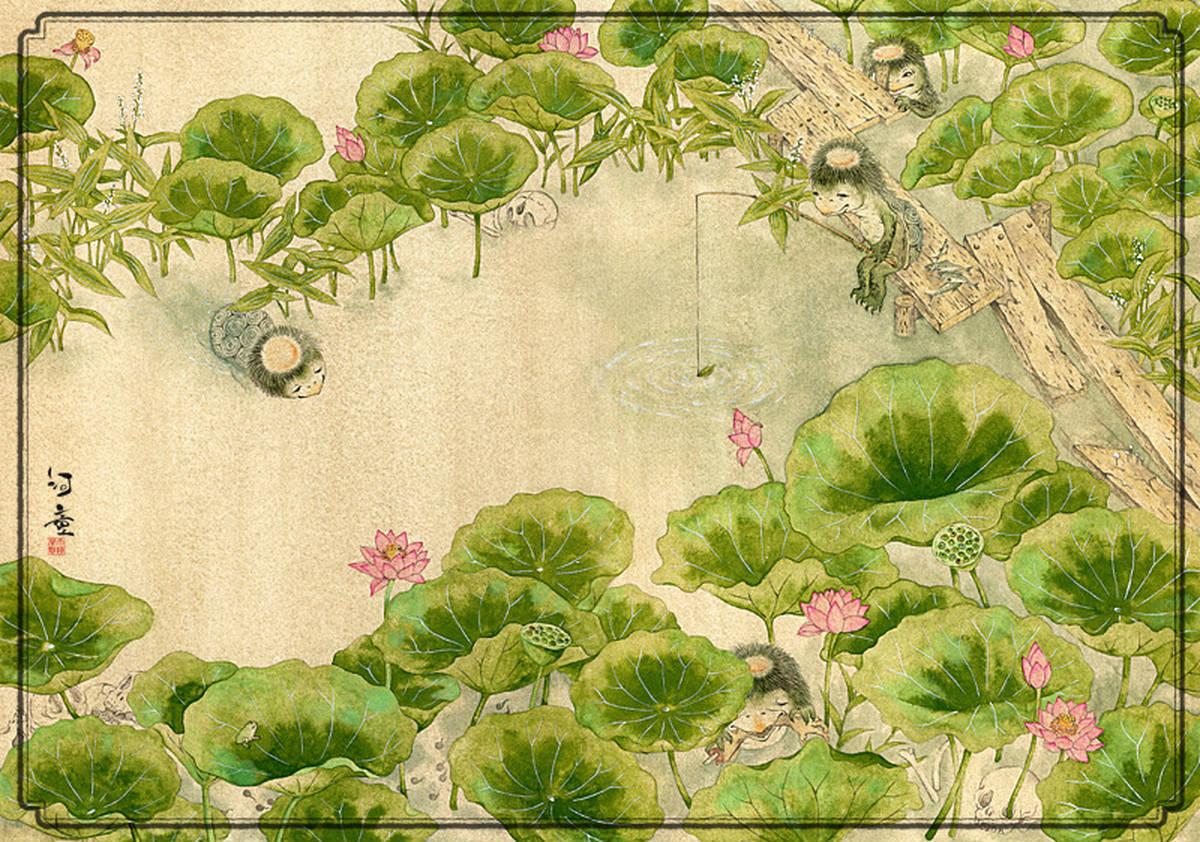
Source: pixvision
There are two main groups of ancient Japanese drawings. Both maintain characteristics that differentiate and resemble them but at the same time distance them to produce new forms of drawing.
monochrome nihonga
Monochrome nihonga is a Japanese art style based on mixing very dark inks and very light inks. The objective of this technique is to manage to project a series of white, grayish and black tones with influences of greenish tones on the works.
In this technique. the Japanese use an ink called sumi ink or small ink. This ink is made with their own vegetable materials such as the thorn tail or the animal's own skin. In short, it is a rather curious style that has been greatly influenced by the ancient Japanese era.
polychrome nihonga
Unlike the previous technique, in the polychrome nihonga, different colored inks are used that come from the reefs or from elements that come directly from the sea. This style is recharged with life, since pigments with very vivid colors are used that achieve a very pleasant effect to see in the works.
Normally we usually appreciate this style in works where elements such as animals, mountainous or natural landscapes, etc. are enhanced. There have been many famous works that have used this technique and well, they have been recognized worldwide and exhibited in some of the best museums in the world.
Art Works
the great wave
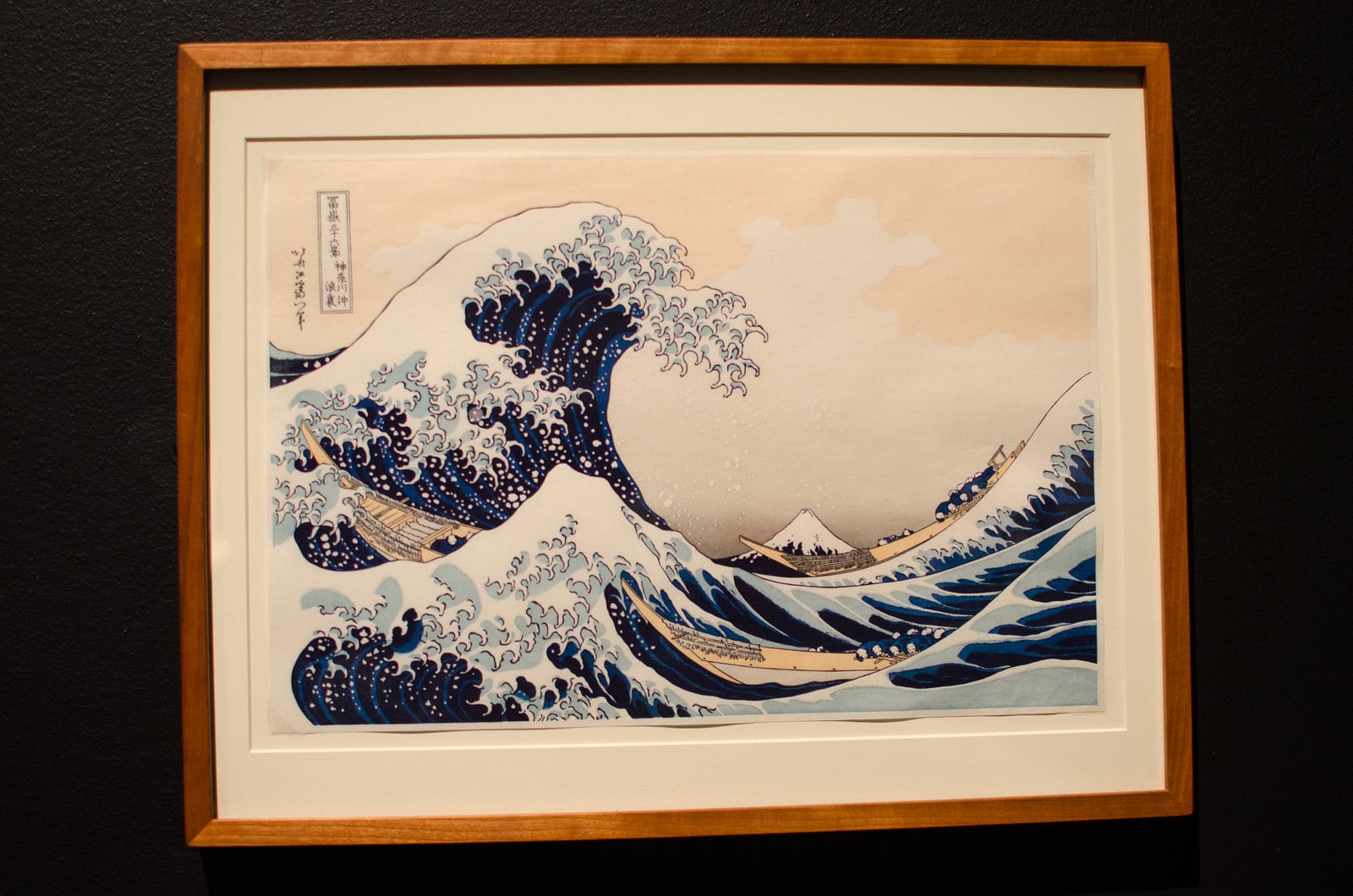
Source: My modern met
The Great Wave is one of the works, not to mention the most important of the Japanese old style. It is a work done by the painter Katsushika Hokusai. It is one of the most representative canvases, since his painting was made in a space of about 40 cm.
It is one of the works that, despite being part of Japanese art, has undoubtedly been one of the representations that has reached all corners of Asia. Not only has it been a work that revolutionized and made known that art so hidden for years, but it also gave rise to the inspiration of many artists.
The Japanese
The Japanese It is one of the revelation works painted by the French painter Claude Monet. Not only did he dare to use this style, but he was also successful in the use of colors and their shapes. To do this, he set out to portray a work where a woman appears dressed in Western attire and holding a fan.
The woman who appears in his work, years later, appeared to be his wife Camille, who, according to him, loved to dress in this type of outfit.
fuji red
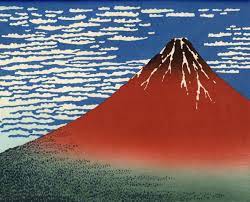
Source: Origami Clover
the red fuji is another of the works of the Japanese painter Katsushika Hokusai. The canvas maintains the height similar to that of the wave, approximately 40 cm. This work portrays one of the most sacred volcanoes and a very important symbol in Japan.
For this, he used warm colors such as reds or browns that gave him a complete meaning of what he wanted to reflect in his work.
Artists
Hiroshi Yoshida
Hiroshi Yoshida is one of the revelation artists of Japanese art. Born in 1876 he is known to be one of the many artists who were greatly influenced by the new print movement. One of the star elements to highlight of this artist are undoubtedly his posters, It has a wide range of posters where the Japanese style of the time stands out.
In addition, his works are very influenced by the Second World War. In short, a theme recharged with major global political conflicts and major powers around the world.
Shinsui Ito
He is another of the artists coming from printing. He specialized in what we now know as the Nihonga style and began to develop the first works of it. He is one of the most influenced artists in Tokyo and also studied illustration together with artists like Hiroshi Yoshida. Without a doubt, his works have also been an artistic reference and have been recognized worldwide.
What most characterizes his works is the use of monochrome inks and the mixture of vivid and bright colors that manage to captivate the public's attention. He is without a doubt one of the star artists.
Katsushika Hokusai
As we have seen in his work previously, he is one of the quintessential painters of Japanese art. What stands out most in his works is that he draws through spirals and waves that allow a total elevation effect in his works, it is as if his works suddenly come to life and can move.
As well He has been the author of many other works, such as Hokusai Manga, where he deals with topics about the city in which he lives and narrates experiences and experiences. Without a doubt he is one of the best painters of Japanese art.
Utagawa Kuniyoshi
And finally we have a Japanese master of a technique known as Japanese woodblock printing, also known as prints. Throughout his life, he has dedicated himself to making textile works where he was inspired by some of the dreams he had, he also added elements typical of horror stories such as ghosts and added elements that were outside of reality.
Among his most famous works are the sailor of Tokuso, dawn in New Year or cats imitating the 53 seasons. He is undoubtedly one of the most important Japanese artists in terms of making prints.
Conclusion
The Japanese style has undoubtedly revolutionized the art we know today. There are many works that have been made and the artists that have become involved.
We hope that you have enjoyed this long but short journey to places in Asia and that you have learned about ancient Japanese art and culture. If you take a look through your browser, you will realize that there are many more works and that there have been many years of artistic struggle for the Japanese.